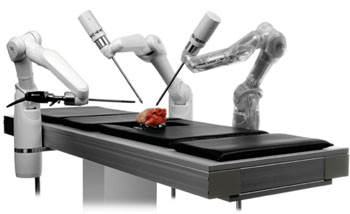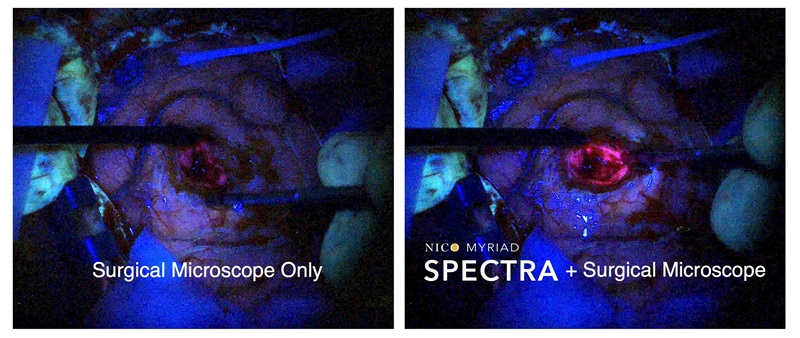Robotic Telemanipulation Promotes Cardiac Surgery
By HospiMedica International staff writers
Posted on 19 May 2015
A robotic telesurgery system provides performance characteristics that advance minimally invasive procedures by stabilizing beating heart motion.Posted on 19 May 2015
The MiroSurge includes a master console as well as a teleoperator consisting of three Miro surgical robots. Two of the Miro robots carry surgical instruments equipped with miniaturized force and torque sensors to capture reaction forces with manipulated tissue. One more Miro robot guides a stereo video high definition (HD) endoscope camera that transmits laparoscopic video images of the patient. Both the stereo video stream and the measured forces are displayed to the surgeon at the master console, who controls the haptic input arms.

Image: The MiroSurge telesurgery system (Photo courtesy of DLR).
The instruments are powered by electrically driven motors and sensors located at their tips. Highly sophisticated integration of the sensors allows direct, split-second manipulation of the tissues within the surgical area, passed on to physicians as a tactile experience. Additionally, the endoscopic video stream can be stabilized by optical tracking in real time, so that a virtually stationary video picture can be consistently presented to the surgeon. The MiroSurge telesurgery system was developed at the German Aerospace Center (DLR; Oberpfaffenhofen-Wessling, Germany).
“Our ultimate ambition is robot supported surgery on the beating heart; the application of the heart-lung machine would become obsolete for a whole variety of procedures that way,” said Ulrich Alexander Hagn, and colleagues of the DLR Institute of Robotics and Mechatronics, Robotic Systems. “Collaterally, the very traumatizing effects of the heart-lung machine on the patient could be avoided, such as blood contact with extrinsic surfaces, inevitable blood clotting attenuation, typical generalized inflammation reaction.”
Each Miro robotic arm is a highly integrated mechatronic system with seven fully torque-controlled joints. The light-weight, kinematically redundant arm includes—besides the motors and gears—safety brakes, integrated torque and position sensors, power electronics, and programmable electronics in each joint. The different joint logic electronics are connected by a high performance communication bus, which allows outsourcing the joint control to the external supply module.
Related Links:
German Aerospace Center
Link to MiroSurge video













.jpg)
